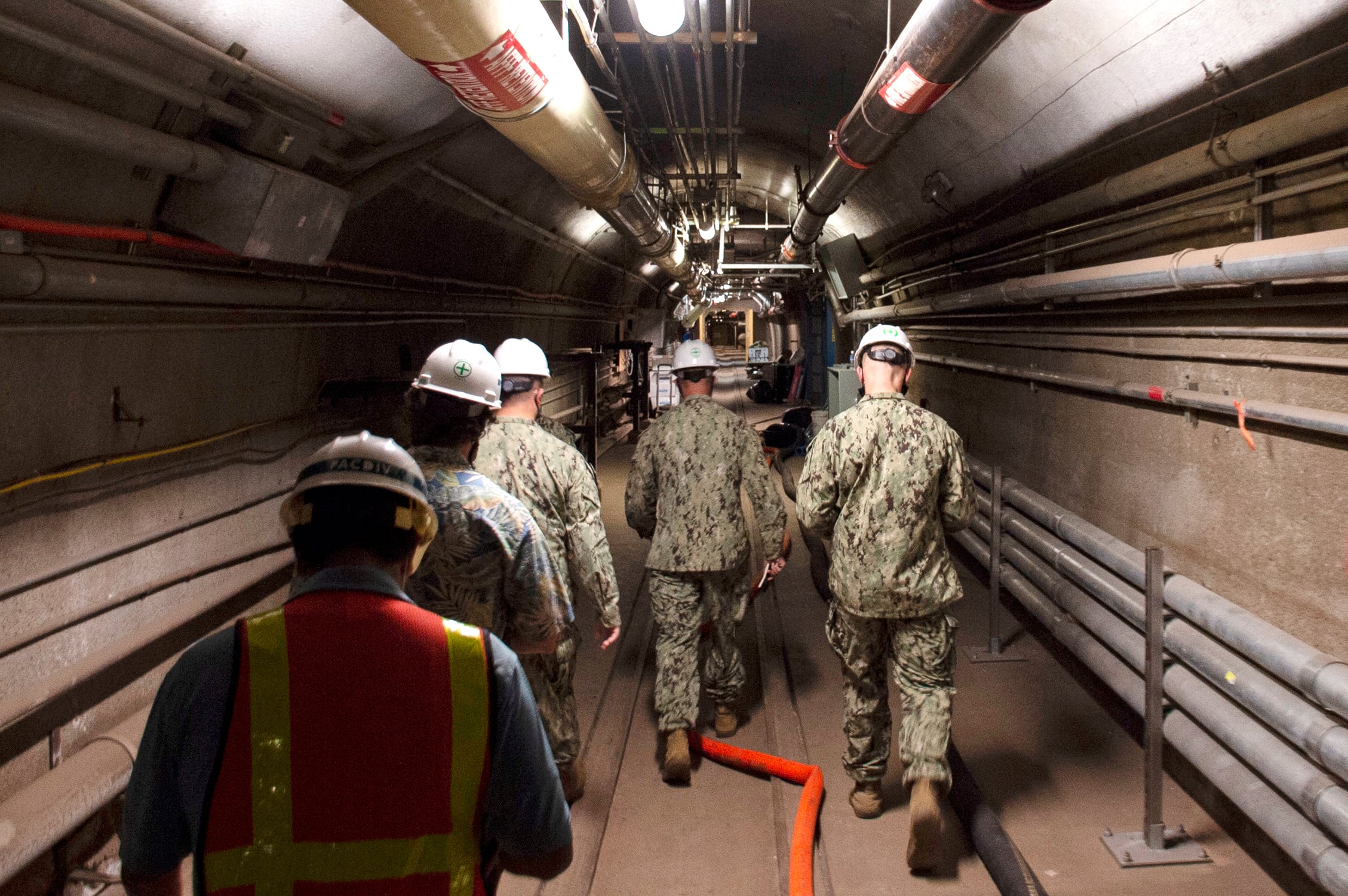The Defense Department is now aiming to complete defueling of the the Red Hill Bulk Fuel Storage Facility in Hawaii by January 2024 — months earlier than the Pentagon originally forecast.
A fuel leak at the facility in November 2021 affected approximately 9,000 Army, Navy and Air Force families at Joint Base Pearl Harbor-Hickam and the Army’s Aliamanu Military Reservation and Red Hill Housing. About 6,000 people were sickened after drinking or using the contaminated water and sought treatment for nausea, headaches, rashes and other conditions. The military subsequently paid for many families to temporarily relocated to area hotels.
The Pentagon said it will start defueling the facility in October and is shooting to wrap up removing the fuel by the end of January 2024, according to a new supplement released Tuesday. Defense officials had previously planned to complete the defueling process in July 2024.
“This supplement demonstrates our intent to begin defueling the Red Hill Bulk Fuel Storage Facility on an accelerated timeline,” Pentagon Press Secretary Brig. Gen. Pat Ryder said in a statement Tuesday. “The prospect of defueling early is a testament to the commitment of the Department to safeguarding the environment and protecting the health of people in Hawaii.”
The plan outlines the four steps needed to remove 104 million gallons of fuel at Red Hill:
- Defuel tank mains
- Defuel flowable tank bottoms
- Unpack pipelines
- Remove and relocate all fuel in surge tanks
Following these steps should remove approximately 99.85% of the fuel from the facility. But despite these efforts, the Pentagon said a sizable portion of fuel will still remain.
RELATED

“DoD acknowledges that a substantial amount of fuel (between 100,000 and 400,000 gallons) will remain in RHBFSF at the conclusion of defueling actions covered in this supplement,” the document said. “DoD will provide [the Department of Health] and [the Environmental Protection Agency] with additional supplements as needed to comprehensively address all additional actions necessary to ensure removal of all fuel from RHBFSF.”
The U.S. Environmental Protection Agency and the Hawaii Department of Health must sign off on the military’s new plan.
Kathleen Ho, Hawaii’s deputy director of environmental health, said she was encouraged by the new proposal.
“We will carefully review this submission to ensure that the updated timeline and plan can be executed safely without any further risk to the environment,” Ho said in a statement.
The tanks can hold 250 million gallons of fuel but are at less than half capacity now. Thirteen of the 20 tanks, which were built into a mountain ridge in 1943, have fuel in them.
Secretary of Defense Lloyd Austin announced in March 2022 that the military would shut down the facility and pursue more distributed refueling options instead.
“The distributed and dynamic nature of our force posture in the Indo-Pacific, the sophisticated threats we face, and the technology available to us demand an equally advanced and resilient fueling capability,” Austin said then. “To a large degree, we already avail ourselves of dispersed fueling at sea and ashore, permanent and rotational. We will now expand and accelerate that strategic distribution.”
A Navy investigation found a cascading series of mistakes, complacency and a lack of professionalism over the course of six months led to the 2021 fuel spill. It has yet to announce disciplinary action in response to the spill.
— The Associated Press contributed to this report.





